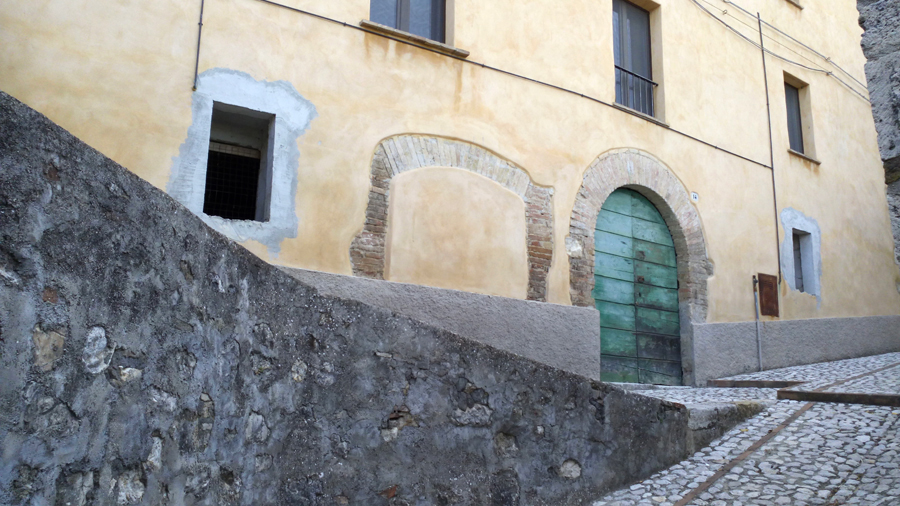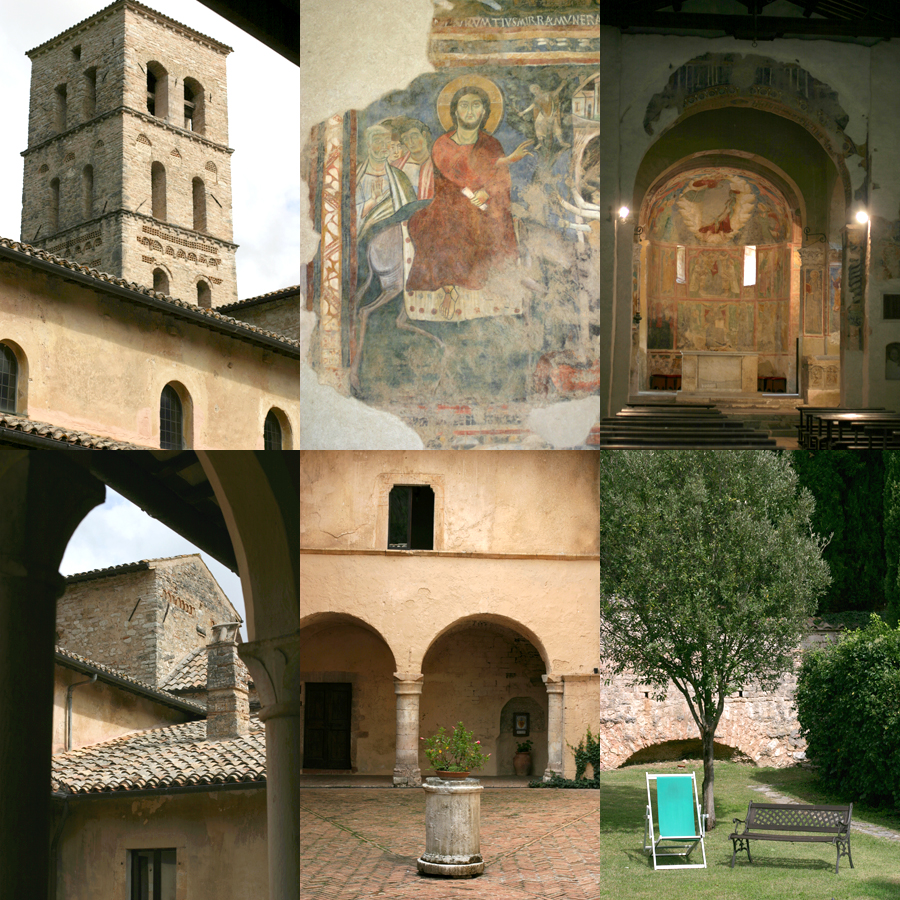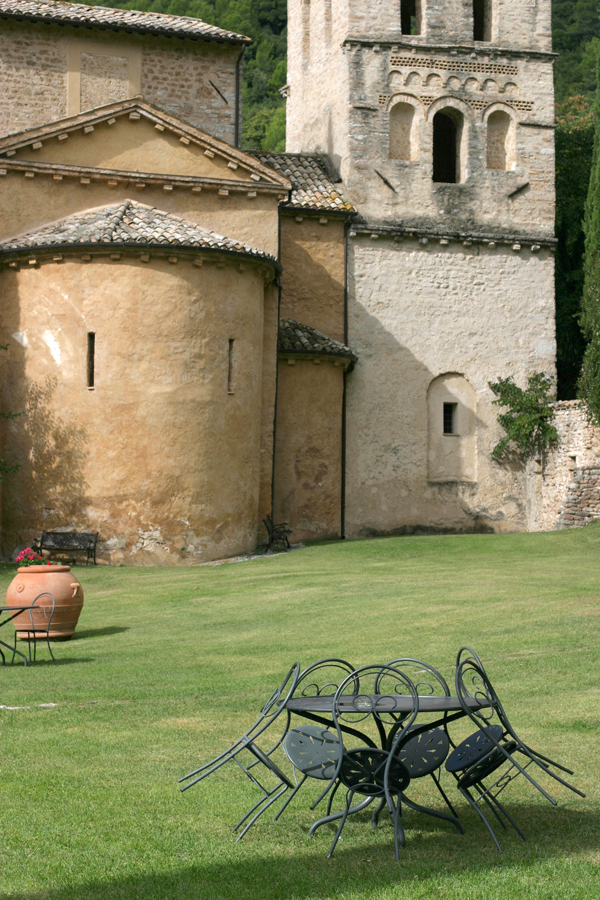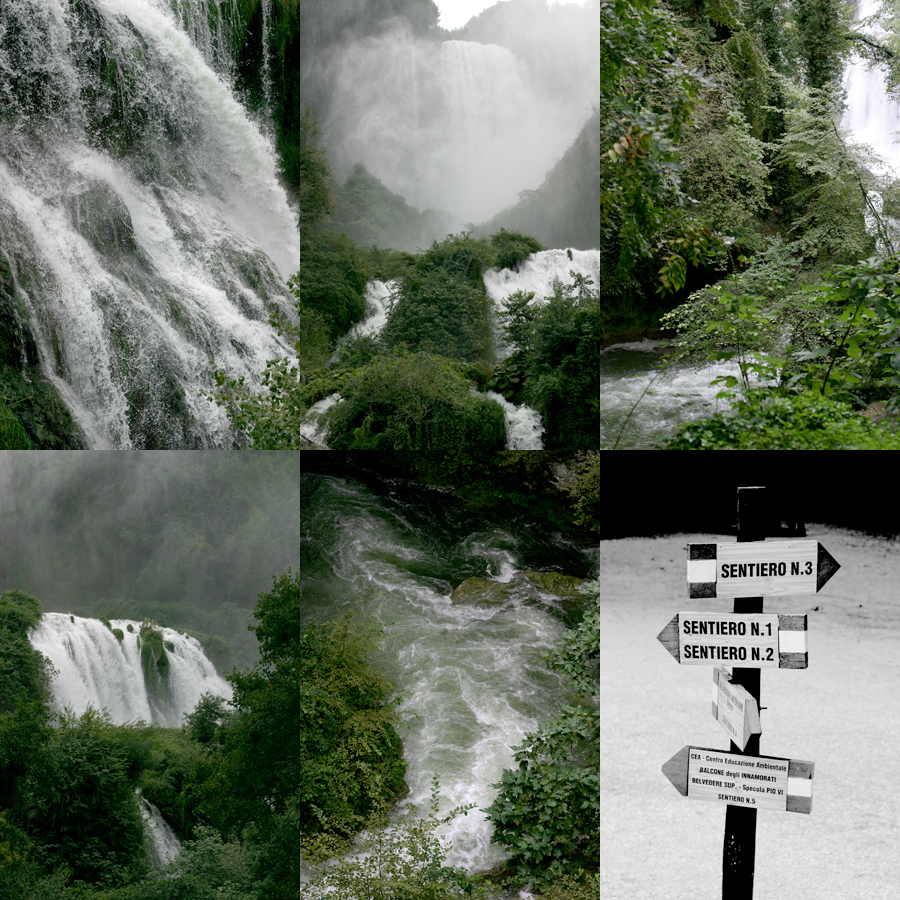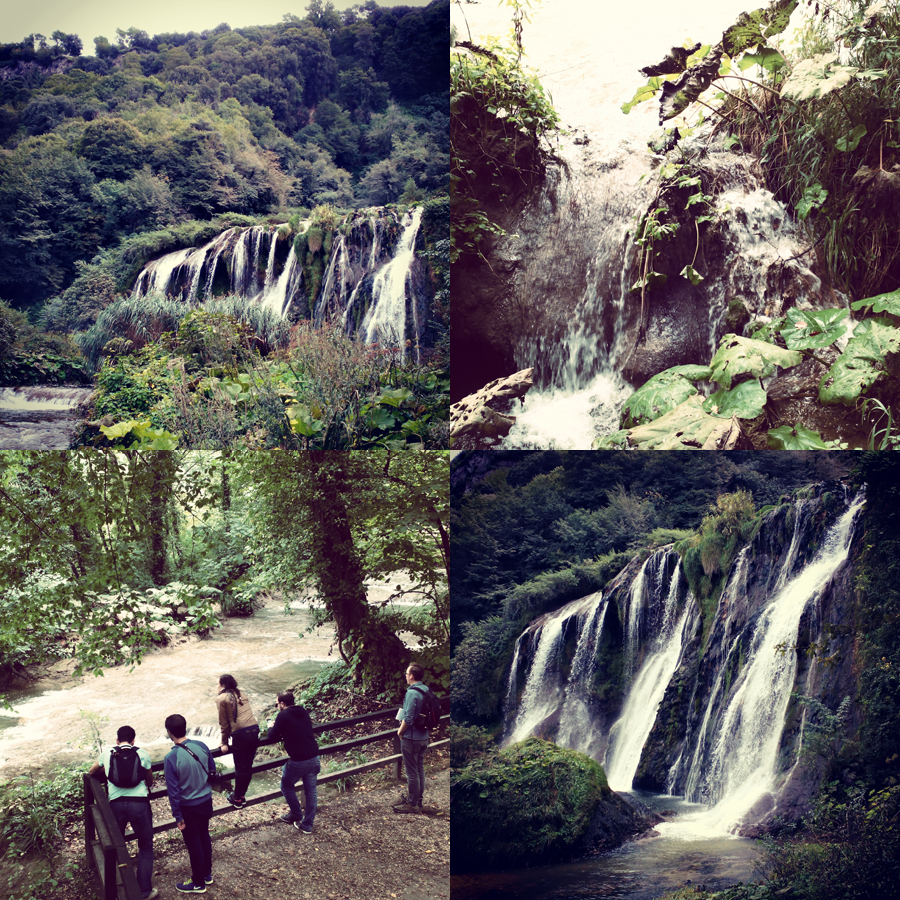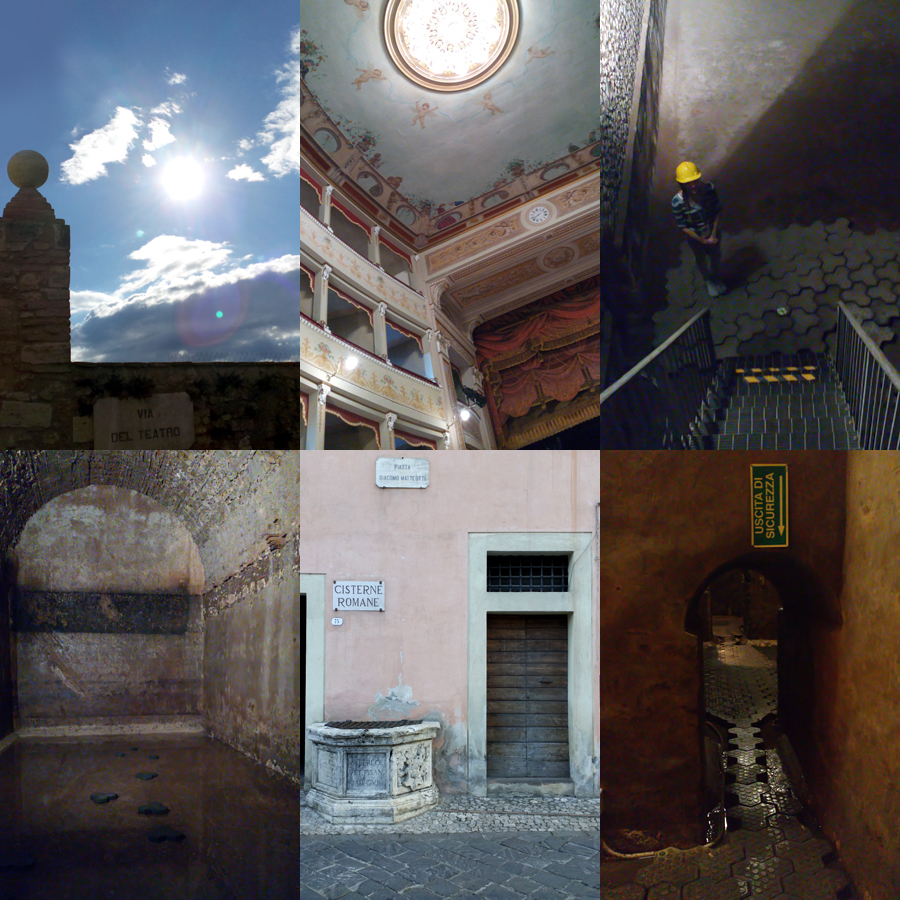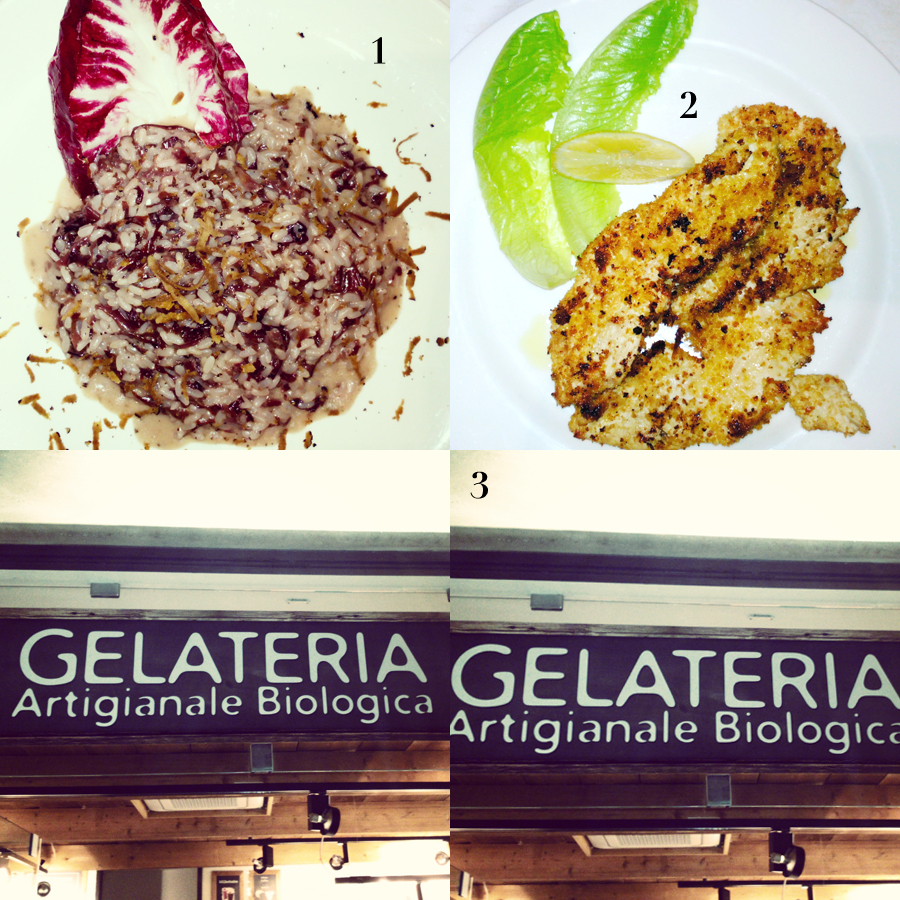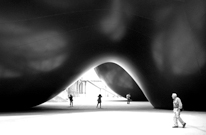A Benedictine Abbey
This morning we leave Norcia
and the elegant Palazzo Seneca (déjà!) to Perugia. On the road, we stopped at the Abbazia di San Pietro in Valle, a Benedictine abbey dating back to the eighth century, on the Mount Solemn.
Surrounded by unspoilt landscape with tall cypress (my favorite trees), the place lends itself to introspection and quiet. Beautiful autumn light, soothing silence and superb frescoes of the small church dating from different eras.
The legend says two hermits from Syria, John and Lazarus built a hermitage that became a place of worship for local populations. Later Faraldo II, Duke of Spoleto, had a vision in a dream. St. Peter ordered him to build a church in his honor. During a hunt, the Duke spotted the little oratory of John and Lazarus and decided to built there the church dedicated to St. Peter and the monastery.
Next stop: the Cascata delle Marmore Marmore waterfalls). Road trip …..
Cascata delle Marmore (Marmore Waterfalls)
It rains
when we come to the Cascata delle Marmore, the highest artificial waterfall in the world, with a height of 165 m! Water makes a deafening noise: first impression of power (above photo montage)! I feel like a lilliput.
The three levels waterfall (the biggest level measures 83 m), was created by the Roman consul Curio Dentato (in 271 BC) to drain standing water. You can borrow several paths to reach the different levels. The two most beautiful points of views are the Balcone degli Specola and Innamorati (Lovers Balcony).
On a trail, we come across Gnefro (or rather the opposite, lol!), the mascot of the falls (a kind of green goblin), played by an actor who tells the children the legend of Velino.
One day the shepherd Velino saw from the top of a cliff nymphs. Surprised, they fled, except Nera, the most beautiful. Nera and Velino madly fell in love and get married which put the gods angry. They transformed Nera in river. Inconsolable Velino threw himself into the river. But before he reached the water, he was transformed in cascade by Jupiter.
Amelia
The Archaeological Museum
After a late lunch in Amelia, one of the oldest cities of Italy (built previous centuries before Rome) and probably the oldest settlement in Umbria: I visit the Archaeological Museum. I like the austere architecture of the cloister (pictures above).
The museum’s centerpiece is a bronze statue of Germanicus (Germanicus Nero Claudius Drusus), born in Rome in 15 BC and son of Senior General Drusus, brother of the future emperor Tiberius (picture 4 on the photo montage above).
Germanicus had a brilliant political and military career. He died at 34 years old of an unknown illness. Suspicion felt on his uncle and adopted father, Tiberius who didn’t like his growing popularity.
The Teatro Sociale and Cisterne Romane
I follow Michela, our guide, in a maze of small streets in the top of the old town. Colorful facades and beautiful panoramic views of the valley (see the first picture in this article).
At the corner of a flourish narrow street, the bright yellow façade of the Teatro Sociale (Rosita Bassini), built in 1782 by architect Stefano Consacchi. With a capacity of 200 seats, his stage mechanisms are still used for concerts and plays. On the above photo montage, a picture of the balconies and ceiling.
Then we head towards the Cisterne Romane (Roman Cisterns). While we choose our helmets, the excitement grows. These ten cisterns built when Amelia became a Roman municipality, remain intact. Rain water was stored there and inhabitants could use this water freely.
On the photo montage above: the steep stairs, one of the tanks, the main entrance and one of the exits to move from one tank to another. A must “visit” for all lovers of ancient history!
Dinner in Perugia
Hi Perugia! It’s 8 p.m. when we arrive in the historic center of Perugia. Dinner at Ristorante del Sole with excellent truffle risotto (1), breaded turkey filets and a panoramic view over Umbria. Too bad it’s already dark …
The medieval center of the city is gorgeous … and crowded! Perugia is a student city with a vibrant lively atmosphere. Good vibe! In dessert, a biological icecream at the Gelateria Artigianale Biologica (Corso Vannucci 93), highly recommended by Francesca, a proud native and resident of Perugia : )) Buonasera ai tutti!
Photos : © Mademoiselle Le K – Tous droits réservés
Informations
Related posts : DESTINATIONS & HOTEL REVIEWS
Many thanks for this beautiful invitation to Regione Umbria et Alitalia. As always these opinions are my own.

